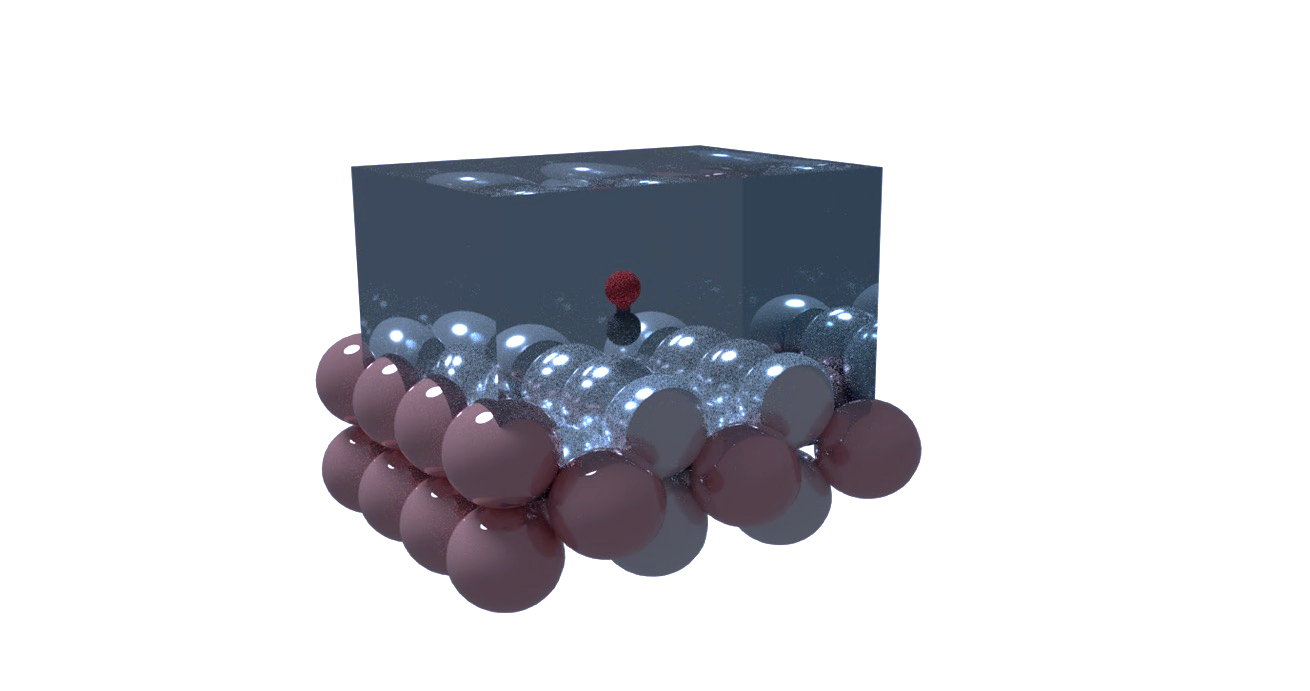“Electrolyte solvation and applied potentials: Challenges for the computational modelling of electrocatalytic reactions”

Theoretical modelling of catalytic reactions plays an increasingly important role in the design of effective and stable catalysts and is key to the understanding of the underlying microscopic processes. Electrocatalytic reactions, however, pose a formidable challenge for theory, since the additional solvent degrees of freedom and the requirement to describe changes of the electronic structure under applied bias goes beyond the capabilities of standard electronic-structure theories.
In the first part of my talk I will discuss a novel way of including the effect of an applied bias potential on the electronic structure of an electrode surface and give an overview on existing methods. In the second part of my talk, I will present details on our implementation of an implicit Poisson–Boltzmann solvation model with inclusion of electrolyte ions.[1] I will also discuss a recent joint theoretical/experimental work investigating the structure of the electrical double-layer of a gold electrode at low bias potentials [2] and explain how these insights force us to improve our implicit solvation models. If time permits, I will outline a method for the inclusion of explicit solvation in electrocatalysis based on a recently developed neural network potential for interatomic interactions.[3]

References
[1] C. J. Stein, J. M. Herbert, M. Head-Gordon, The Poisson–Boltzmann model for implicit solvation of electrolyte solutions: Quantum chemical implementation and assessment via Sechenov coefficients, J. Chem. Phys. 151, 2019, 224111.
[2] S. R. Alfarano, S. Pezzotti, C. J. Stein, et al., Stripping away ion hydration shells in electrical double-layer formation: water networks matter, Proc. Natl. Acad. of Sciences, U.S.A., 118, 2021, e2108568118.
[3] M. Haghighatlari, J. Li, X. Guan, O. Zhang, A. K. Das, C. J. Stein, F. Heidar-Zedah, M. Liu, M. Head-
Gordon, L. Bertels, H. Hao, I. Leven, T. Head-Gordon, NewtonNet: A Newtonian message passing
network for deep learning of interatomic potentials and forces, Digital Discovery, 2022, DOI:
10.1039/D2DD00008C.
Transmisión vía Youtube en: bit.ly/YouTube_ICF
Participante: Dr. Christopher J. Stein
Institución: University Duisburg-Essen (Germany)
Fecha y hora: Este evento terminó el Miércoles, 18 de Mayo de 2022


